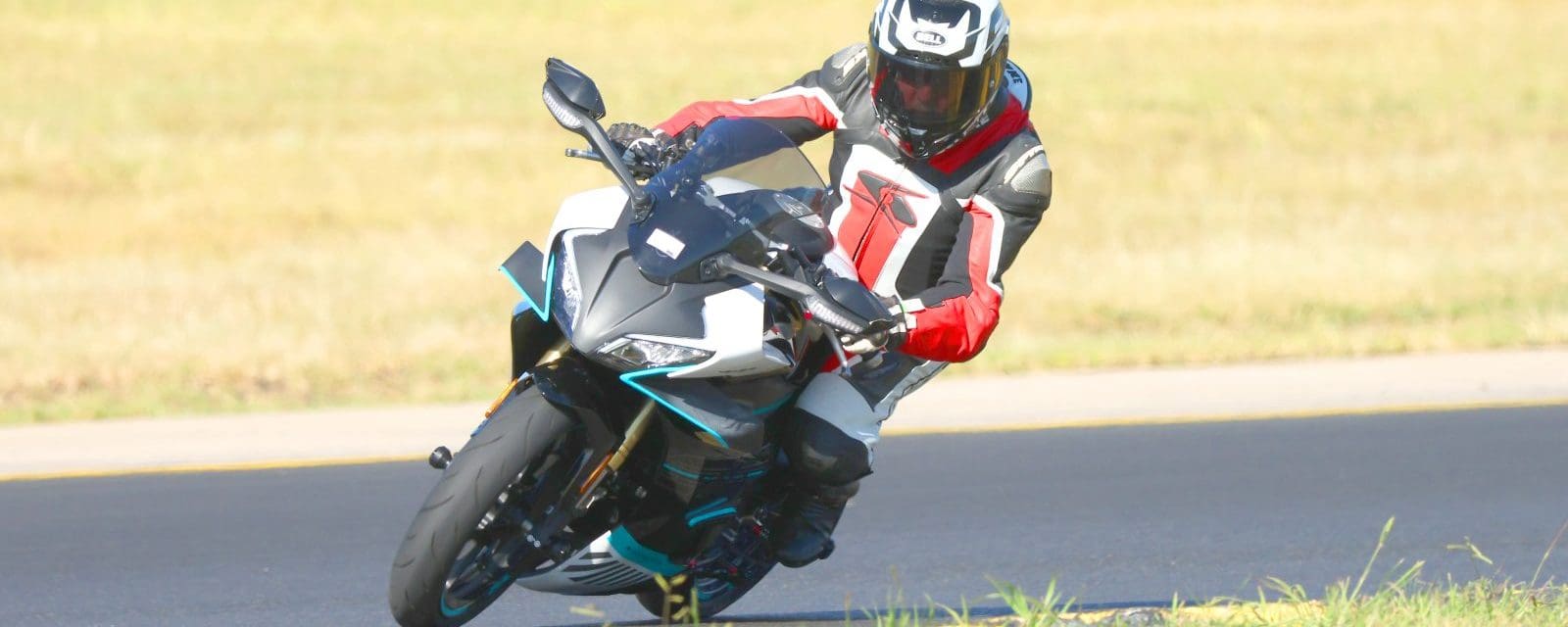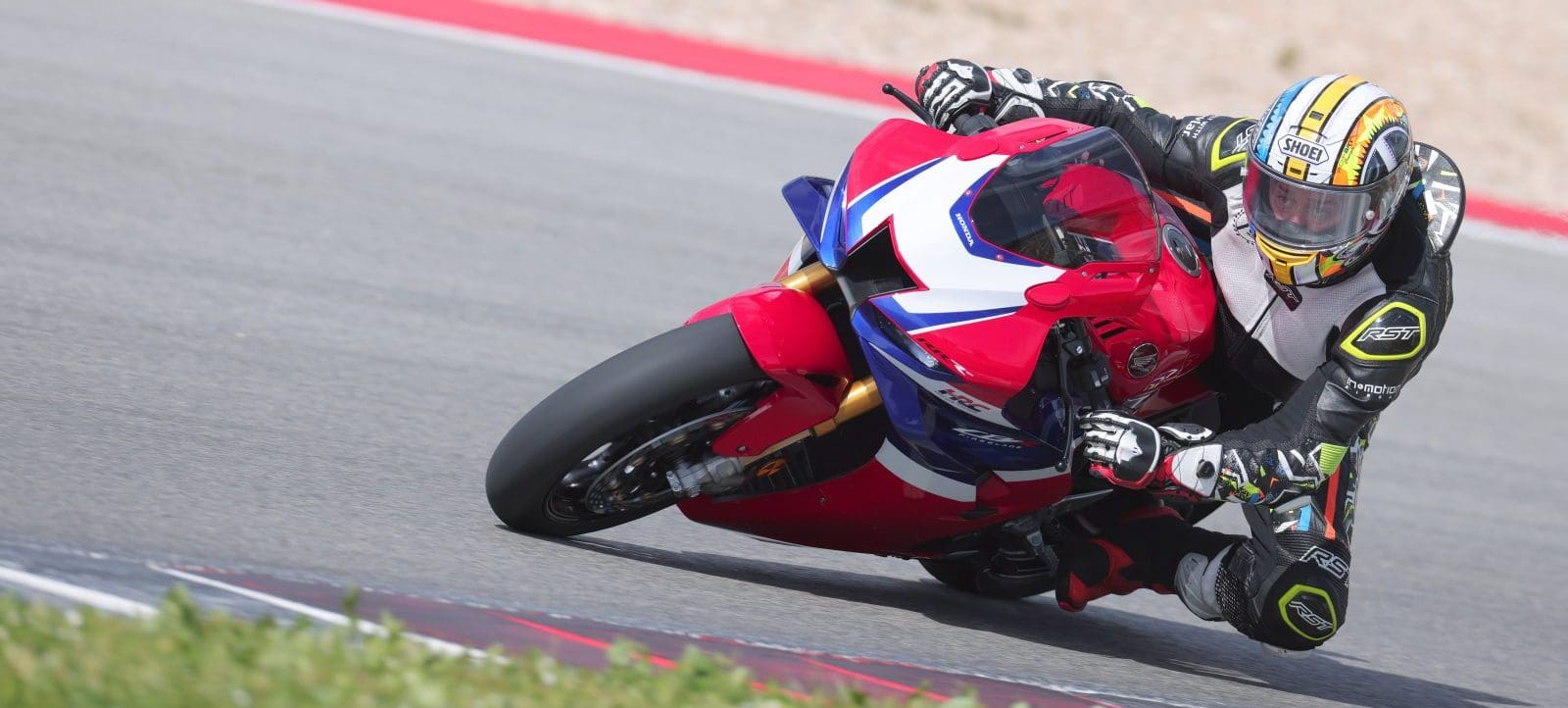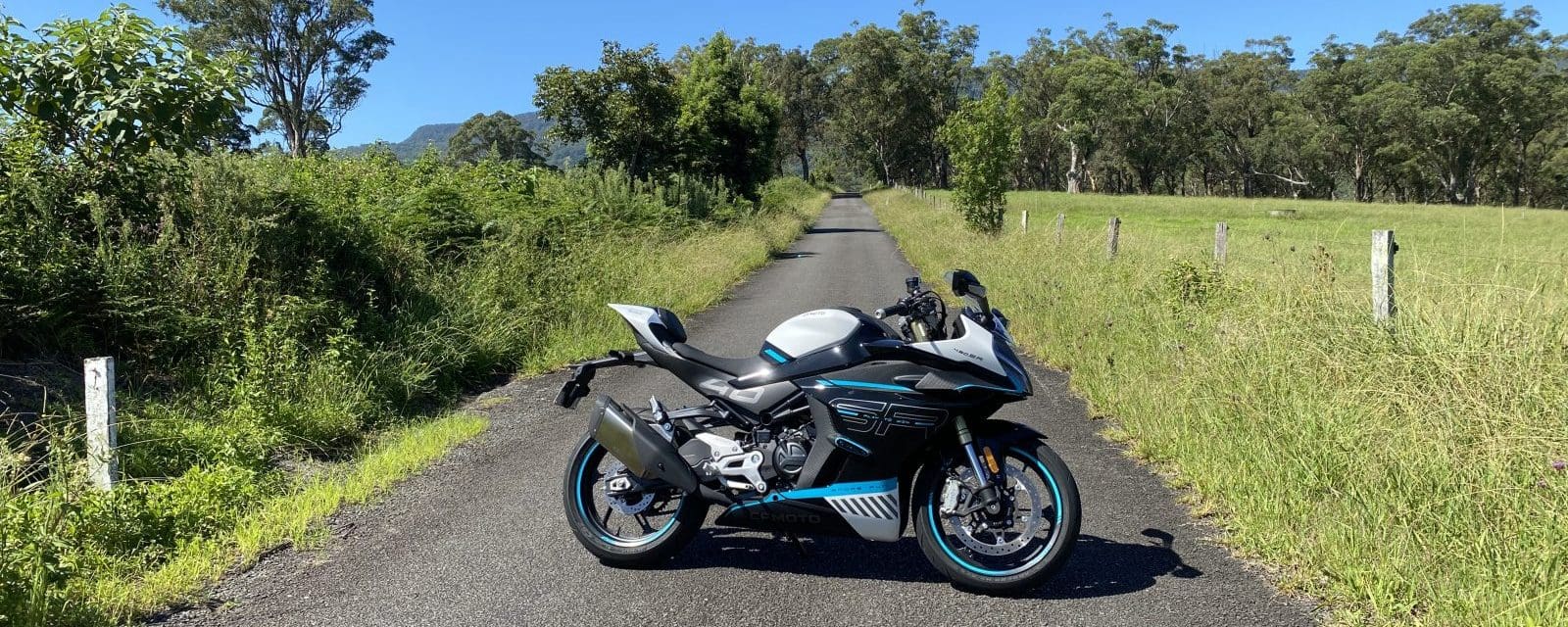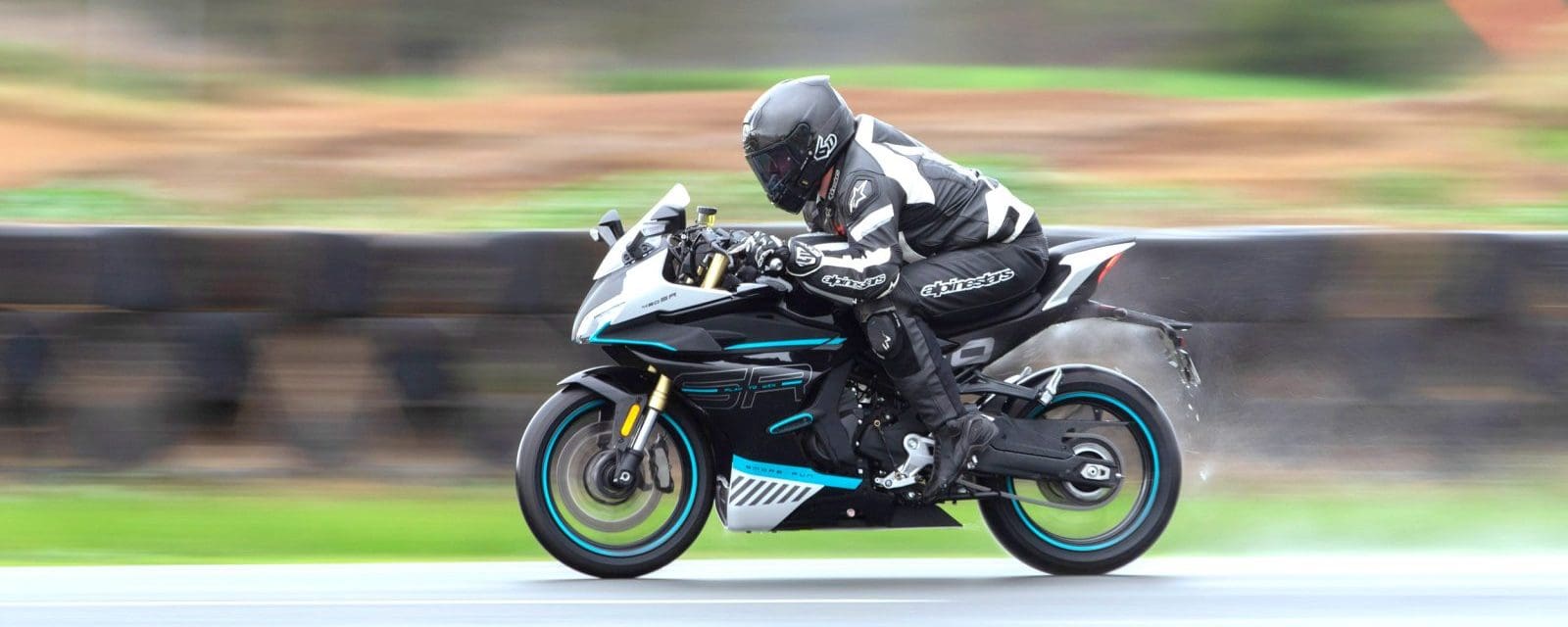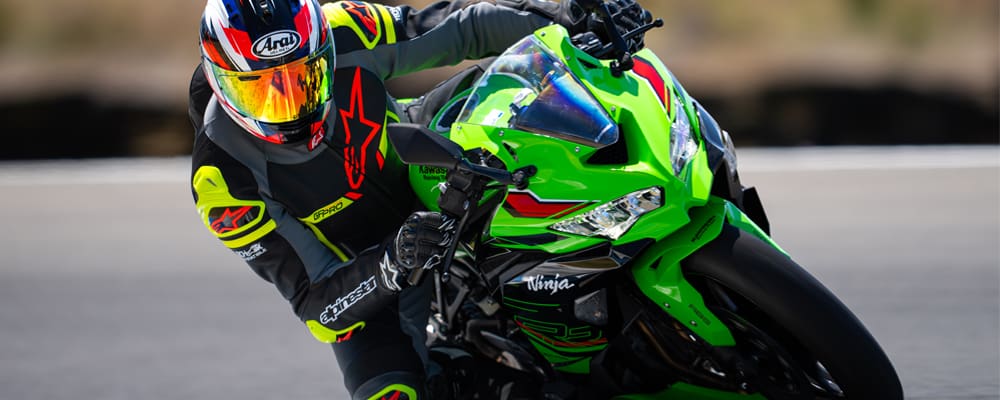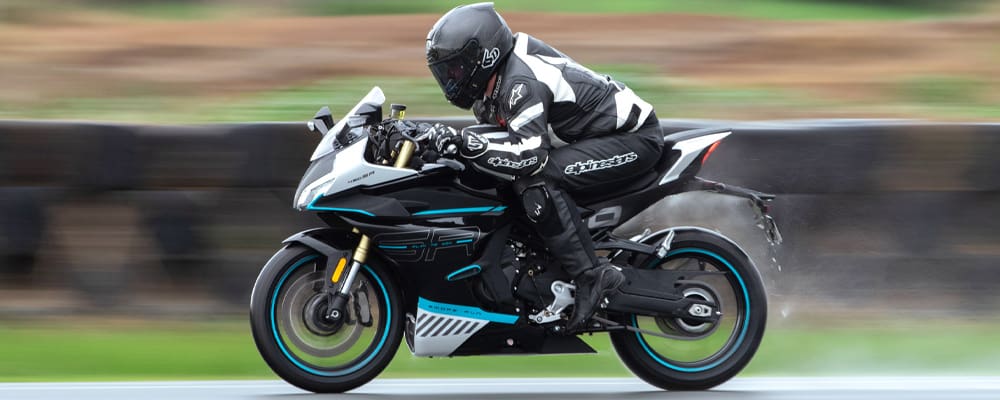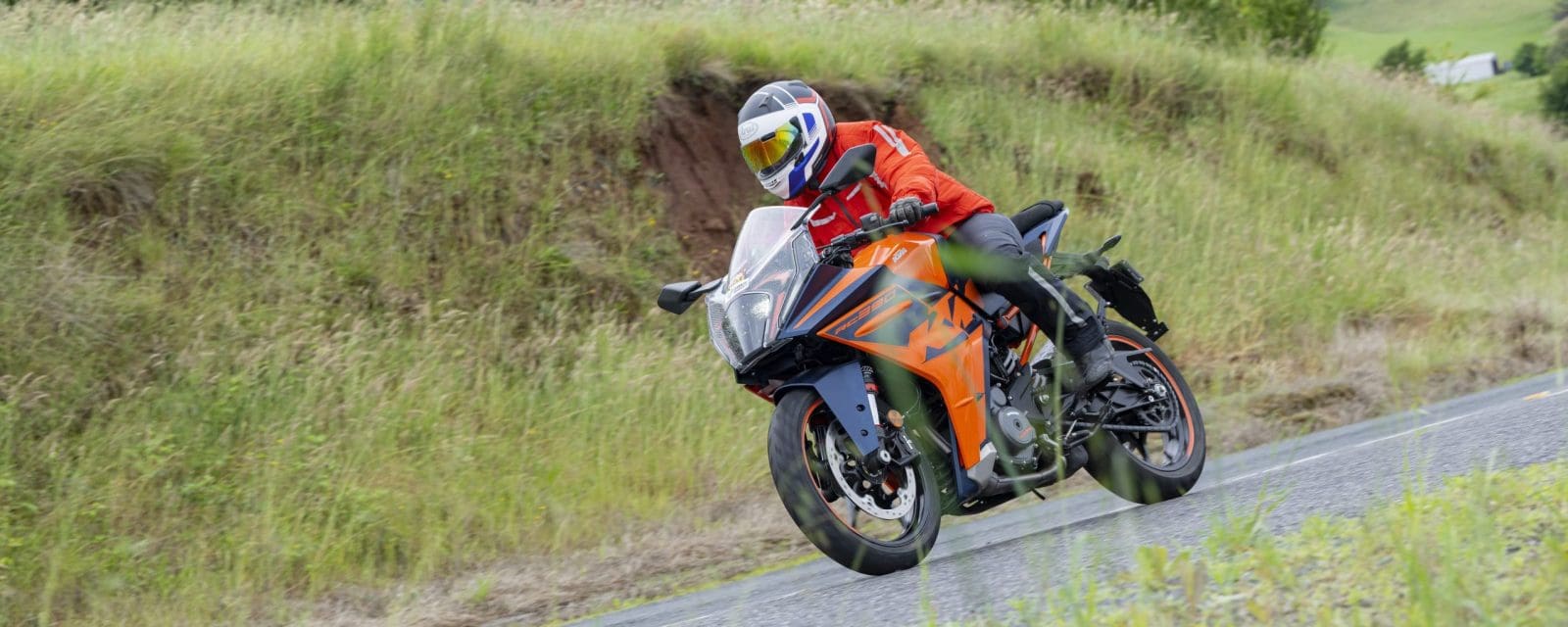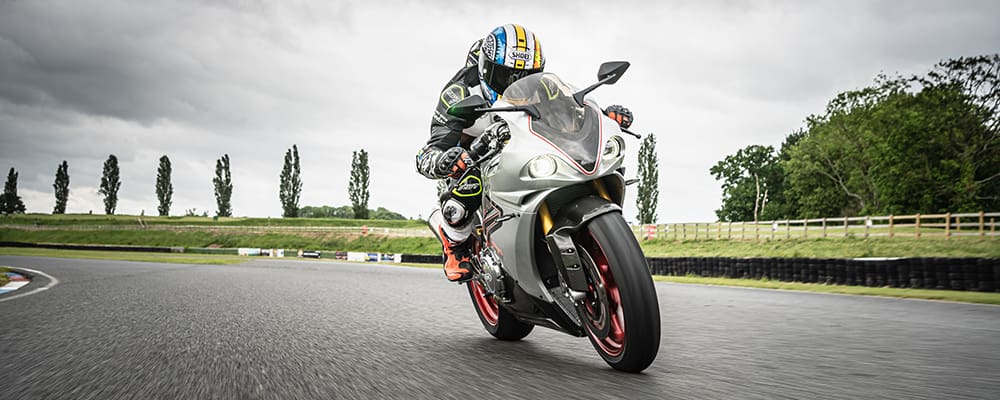Despite prolific success both on track and in showrooms, Honda pulled the plug on the CBR600RR in Europe in 2017. A maturing and fast-changing market allied to tightening emissions regulations made the decision relatively easy for the Japanese manufacturer, but sportsbike fans from Madrid to Melbourne were gutted because the CBR was a fantastic bike. A highly evolved, mass-centralised RC213V for the masses; a pocket rocket that oozed HRC thinking and quality.
By 2021, however, there was hope on the horizon when Honda reintroduced the 600cc inline four to the Japanese market, and bikes started to appear in racing – notably in WorldSSP and on the roads at the Isle of Man TT. And now Honda has reintroduced it, with this MY24 model set to land in Australia in the third quarter.
There was a lot of work required to bring it up to modern standards. The old CBR had no electronic rider aids, no clever six-axes IMU, no aero package – it didn’t even comply with the now-obsolete Euro 4. But that’s all been achieved and it’s now Euro 5+ compliant while preserving its legendary high-revving performance, delivering it to the street and track with state-of-the-art electronics on a par with the 2024 Fireblade (AMCN Vol 73 No 21).
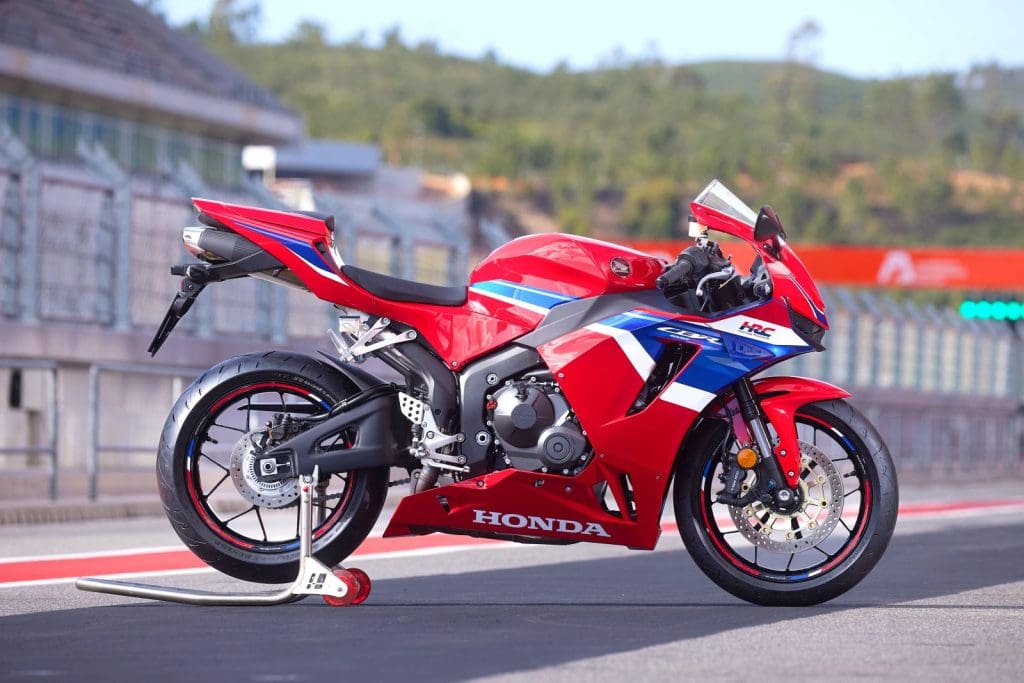
I rocked up to the very fast and demanding Portimão track in Portugal to put the reborn screamer through its paces. The inline four-cylinder layout remains, as does the same over-square 67 x 42.5mm bore and stroke and 12.2:1 compression ratio. The throttle bodies, however, are 4mm larger to 44mm, cam timings are revised and a new exhaust system does much of the heavy lifting in terms of hitting Euro 5+. Honda say more than 50 prototype systems were tried before its engineers were happy.
Improved gas-flow at (very) high rpm was the main performance goal. Despite the strangling effect of those emissions regs, peaks of 89kW (119.4hp) at 14,250rpm and 63Nm at 11,500rpm are similar to the far less restricted 2017 model, which is impressive indeed.
Controlling that frenzy of revs and horses is a huge array of electronics and rider aids: nine levels of traction control (HSTC), five riding modes, five power modes, engine brake control, wheelie control, rear lift control, cornering ABS some 2.4kg lighter than the non-cornering ABS hardware on the 2017 model, and a two-way quickshifter with three levels of adjustment. It should also be noted that the 2024 model gets the six-axis IMU similar to that installed in the new Fireblade and not the five-axis IMU used in CBR600RRs sold on Japan since 2021.
That familiar looking aluminium twin-spar frame remains as before, although the wheelbase is shortened 5mm to 1370mm, while rake and trail go out from 23 degrees and 98mm respectively to 24mm and 100mm. The swingarm is 150g lighter than before while Showa suspension, a CBR hallmark for decades, is fully adjustable with its 41mm diameter Big Piston fork now 15mm longer than before to allow riders to experiment with front-end set up.
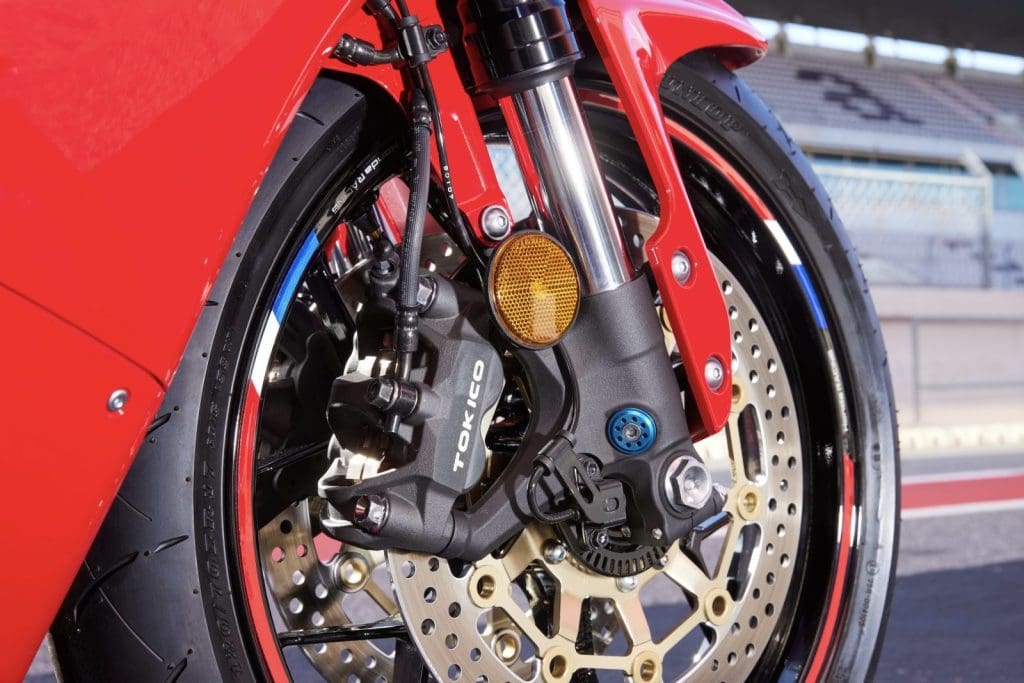
Brakes are Tokico and use twin 310mm discs and four-piston calipers at the front and a 220mm disc at the rear. Honda is quoting a mass of 193kg including fuel, 3kg lighter than the 2017 model.
Those distinctive wings tell everyone you have a 2024 CBR600RR, but the new fairing is not just about downforce: Honda claims the CBR has the lowest drag coefficient in this class and the wings are more for stability than wheelie control.
The fuel tank is mounted 10mm lower which means, in theory, it’s easier to get tucked in.
We didn’t have the best of riding conditions in Portugal. Heavy rain stopped just long enough to create a drying line before heavy rain returned. But this did give us a real-world trackday test of the new CBR600RR, particularly its new suite of electronics.
When the heavy rain hit, my CBR – shod with full-wet Pirelli race rubber – was set up with a power reduction and extra traction control with, of course, cornering ABS in support.
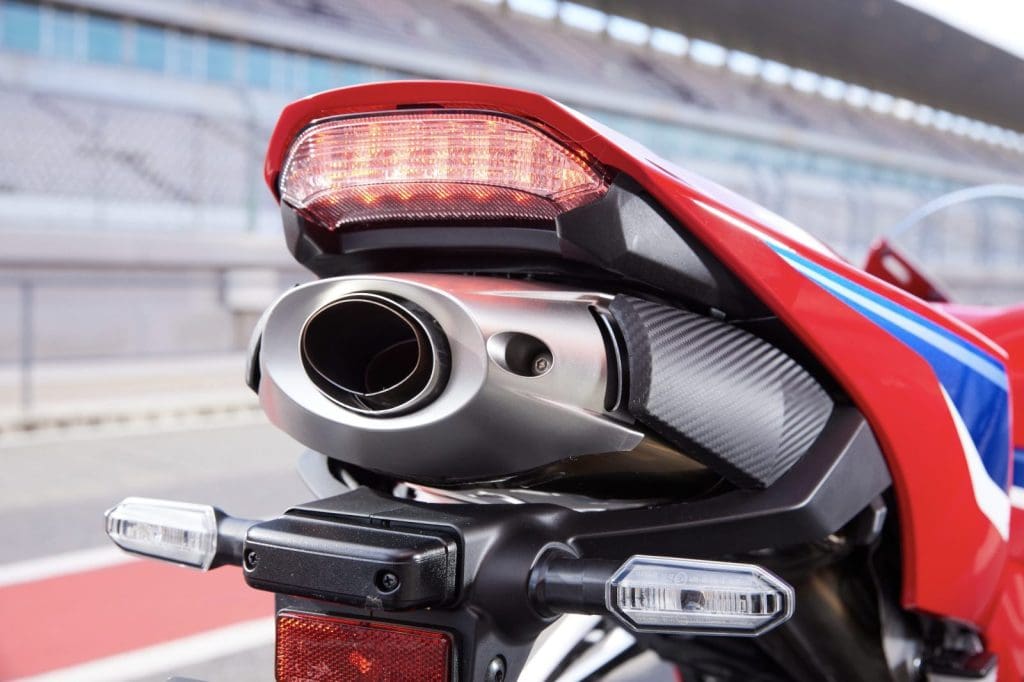
If this had been the old bike, it would have been a case of biting the screen and hoping for the best. Now, with the lean-sensitive rider aids working in the background, I could concentrate on the line while riding safely and enjoying the CBR. Yes, you can still crash it, but jumping on the stoppers for the challenging Turn 1 at the end of the main straight without worrying about washing out the front felt like progress to me.
Riding in the wet and tricky conditions also allowed me to get a feel for the new CBR at a less than flat-out pace.
In many ways, it feels just like the old bike, which is a huge compliment, with a familiar, poised riding position, matched to a compact and lightweight chassis, with plush suspension that gives forensically good feel in the wet.
The power delivery in the lower-power mode felt user-friendly – dare I say, a little too soft –
but the quickshifter was as fast and effortless as a racebike’s.
As the laps rolled by, the CBR encouraged me to push towards knee-down levels of lean, despite the heavy rain. As it always has, the chassis feedback gives you the confidence to push, to generate heat in the tyres, the difference being that there are now rider aids ready to rescue you. These really are a game changer for the CBR in tricky conditions.

A drying line that was dry enough to tear up the Pirelli wets appeared for sessions two and three of our test, allowing me to turn the traction control to its minimum setting, switch off the wheelie control, select full power mode and explore more of the CBR’s potential. Now it felt like a supersport racebike with headlights.
The free-revving inline-four is a joy to thrash to its peak power point just beyond 14,000rpm. That super-quick quickshifter ensures the rpm doesn’t drop out of the hot zone between 9000rpm and 14,500rpm. Allow the revs to fall below 8000rpm and the CBR still pulls but feels flat and fractionally off the pace.
Better to be brutal: to change up only when the shift lights blink and keep that jewel of an engine spinning on back shifts.
It’s so much fun once you click into this racer mentality. Yes, the CBR’s been away for a while but dropping your chin on to the fuel tank, body tucked in behind a small screen, revs approaching 14,000rpm in fifth gear at the end of the main straight and then sitting up and jumping on the stoppers, never gets old.
The CBR is rapid, its corner speed as high if not higher than a Fireblade’s, but with 119hp instead of 215, it’s a less-physical experience with more time to plan and be accurate. The steering is light, predictable and easy. I’m unsure if it’s the added wings, HESD electronic steering damper or revised chassis geometry making the biggest difference but for such a lightweight bike, the new CBR feels even more planted than the old.
It remained completely unfazed by the demanding undulations of Portugal’s rollercoaster racetrack. In fact, with the wheelie control turned off, the CBR produced effortless and controlled wheelies over the circuit’s famous crests.

Another enduring CBR600RR quality is its excellent feedback. There’s so much of the stuff on the new bike that I could push a little harder each lap as conditions improved. Sometimes a little guesswork is necessary in the damp – you react to slides and try and control the bike – but on the CBR I knew precisely where the limits were and just gave myself a small safety margin.
Coming from the UK and having raced at tracks like the North West 200, I’m accustomed to the wet.
Some bigger riders simply don’t fit 600cc sportsbikes, of course, and the Honda is no exception. I’m 170cm tall so the compact riding position of the CBR didn’t bother me. But even as a short rider, it’s evident that the screen is extremely low and the rider triangle is tight. It’s not a small bike per se, but those over six feet tall might need to change the handlebar position and possibly the ’pegs too. And even I would like a taller screen, just to make life easier, especially on a fast track like Portimão.
Sadly, we didn’t get a perfectly dry track to push the CBR’s handling limits, but if a bike works in the wet, that usually translates to the dry.
However, while we know the Tokico brakes are strong, we don’t know whether the ABS-assistance will kick in too early when there’s loads of grip.
And we didn’t get enough time to play around with the multiple rider aids or experiment with the engine brake assist. The set-up options are countless and deserve the time we did not have.
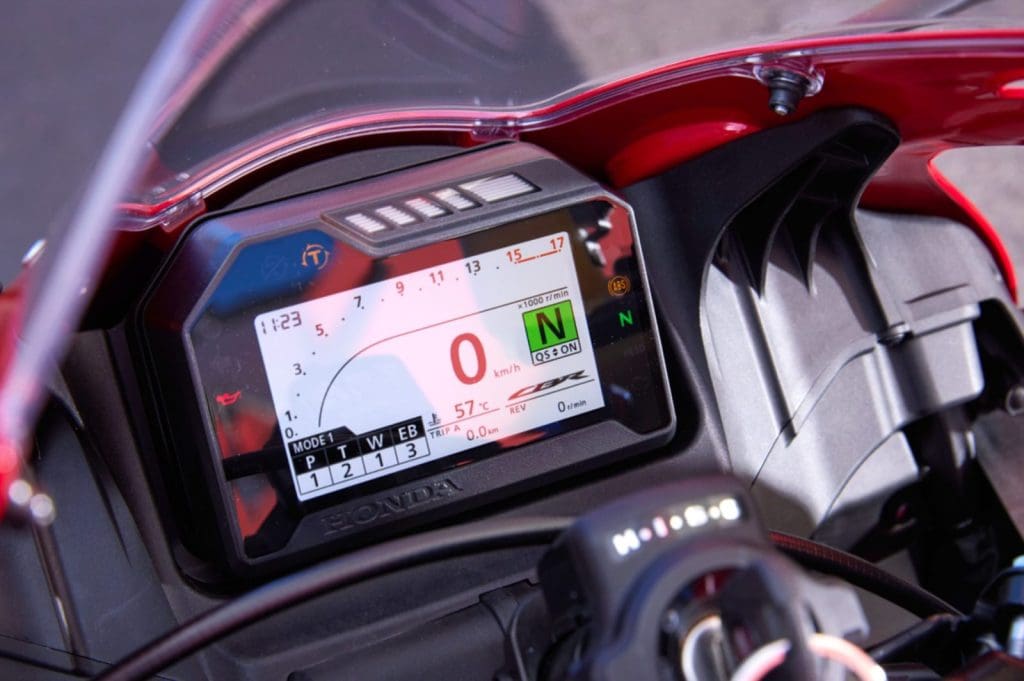
Despite the engineering challenges created by Euro5+, the 2024 CBR600RR’s wicked inline-four engine still revs like a maniac and, power-wise, feels as strong as ever. Here is a bike that doesn’t pamper to the midrange or try to impress with its off-idle grunt but instead simply loves to be thrashed. And now shorter gearing and a slick quickshifter allow you to eke out every last horse.
The chassis is forgiving, predictable, stable and light. It’s such an easy bike to push to the limit, certainly far easier than a 1000cc superbike and in many ways more rewarding. The rider aids set the new CBR above the old bike, especially in damp and tricky conditions.
What can’t be measured is the sheer fun of riding the CBR600RR, especially around a challenging circuit like Portimão. Fast and absorbing without being intimidating or scary, even more so now knowing you have a network of electronic rider aids to straighten things out should you get carried away.
Thrashing a 2024 CBR on track is simply one of the most enjoyable experiences you can have on two wheels.
PROS: Lighter and still a screamer, in most conditions it is more rewarding to ride than a full-on superbike.
CONS: Could do with a taller screen and the rider triangle of ’pegs,’bars and seat won’t suit the very tall.
WORDS: ADAM CHILD PHOTOS: HOND EUROPE, ZEPI GORI, CIRO MEGGIOLARO
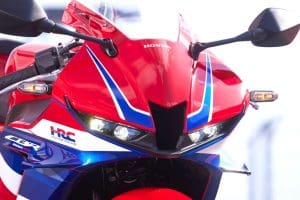
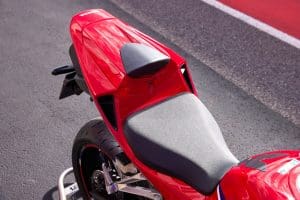



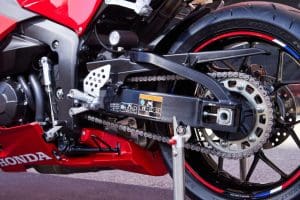
HONDA CBR600RR RACING

The new Honda CBR600RR made its racing debut at Navarra, Spain, for the opening round of the 2024 British Supersport Championship. Honda Racing UK re-entered the championship for the first time since 2013 with an official factory entry in the hands of Jack Kennedy.
The former British champion qualified fourth on the bike’s debut. Race 1 ended with a credible third position, followed by a fifth in Race 2. Honda is also planning to campaign the Supersport class at the upcoming Isle of Man TT and North West 200. The same bike will now be in the hands of three-time TT winner Dean Harrison.
SPECIFICATIONS – 2024 HONDA CBR600RR
ENGINE
Capacity 599cc
Type Inline four cylinder, DOHC,
four valves per cylinder
Bore & stroke 67mm x 42.5mm
Compression ratio 11.2:1
Cooling Liquid
Fueling PGM-FI
Transmission Six-speed
Clutch Dry, single disc
Final drive Chain
PERFORMANCE
Power 89kW (119.4hp) @ 14,250rpm (claimed)
Torque 63Nm @ 11,500rpm (claimed)
Top speed 265km/h (est)
Fuel consumption 5.5L/100km (claimed)
ELECTRONICS
Type Not given
Rider aids Cornering ABS, traction control, wheelie control and engine brake control
Rider modes Track (1), Sport (2), Rain (3) plus two User modes
CHASSIS
Frame material Aluminium
Frame type Twin spar
Rake 24°
Trail 100mm
Wheelbase 1370mm
SUSPENSION
Type Showa
Front: 45mm USD fork, fully adjustable, 120mm travel
Rear: Monoshock, fully adjustable, 128mm travel
WHEELS & BRAKES|Wheels Aluminium
Front: 17 x 3.5
Rear: 17 x 5.5
Tyres Dunlop Roadsport 2
Front: 120/70-17
Rear: 180/55-17
Brakes Tokico
Front: Twin 310mm discs, four-piston radial calipers
Rear: Single 220mm disc, twin-piston caliper
DIMENSIONS
Weight 193kg (kerb, claimed)
Seat height 820mm
Width 735mm
Height 1140mm
Length 2030mm
Ground clearance 125mm
Fuel capacity 18L
SERVICING & WARRANTY
Servicing First: 1000km
Minor: 12,000km
Major: 24,000km
Warranty Two years, unlimited kilometres
BUSINESS END
Price $27,599 +ORC
Colour options Grand Prix Red
CONTACT
motorcycles.honda.com.au



